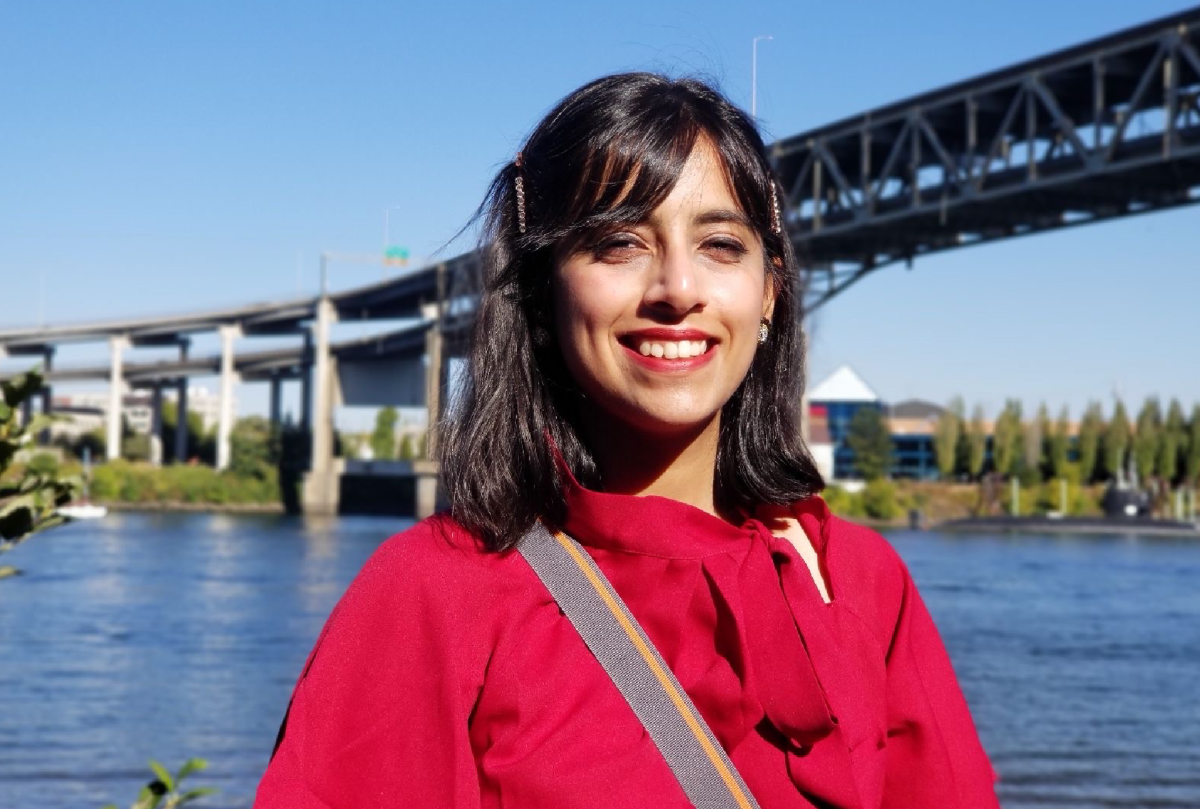Somya Sharma Chatterjee Wins SDM24 Best Application Paper Award

Department of Computer Science & Engineering PhD student Somaya Sharma Chatterjee was the first author of a paper that earned the Best Application Paper Award at the 2024 Society for Industrial and Applied Mathematics (SIAM) International Conference on Data Mining (SDM24) Conference. Sharma’s research focuses on predicting the possible spread of prescribed fires.
Prescribed fires are man-made fires that are lit to meet land management objectives like soil nutrient recycling and reducing the likelihood of wildfires. Her work uses machine learning (ML) and artificial intelligence (AI) to potentially be used to predict the spread of prescribed fires and hopefully prevent them.
“Traditional models like QUIC-fire take a long time to generate the forecast for how prescribed fires spread,” said Sharma. “Since weather conditions can change rapidly during a prescribed fire, there is a need for a faster forecasting tool that can predict the spread of prescribed fires. With the machine learning models we are building, we can achieve 3-6 times faster forecasting times compared to traditional forecasting methods like QUIC-fire. The saved time can be used for decision-making if the fire managers want to change their ignition patterns to accommodate for changing weather.”
Sharma hopes to further her research by studying different weather conditions that could affect prescribed fires as well as understand how fire managers can benefit from a tool that can forecast how a prescribed fire could spread.
“I think in an operational setting, fire managers are interested in accurately predicting prescribed fire spread under varying wind conditions. Our tool can further be improved by studying wind conditions that are faster than 15 miles per hour,” said Sharma. “We need to consider extreme wind conditions. Further, for the tool to be useful to fire managers or government officials, we might want to look at long-time sequences.s. We are limited to a few minutes, but in reality, you might want to forecast for several hours ahead. To do that, you need more computational resources for the machine learning models and we need to look at other input factors apart from changing weather conditions or weather patterns. Incorporating these additional input factors and longer time sequences could be a very good next step with this work.”
Sharma worked with an interdisciplinary team for over two years on this project, including her advisor, Regents Professor Vipin Kumar, who was the last author of the paper. Additionally, she collaborated with Kelly Lindsay, Neel Chatterjee, Rohan Patil, Ilkay Altintas De Callafon, Michael Steinbach, Daniel Giron, and Mai H. Nguyen.
“I would like to thank my advisor and all the co-authors on the paper, everybody contributed so much,” said Sharma. “I don’t think this would've been possible without their help. It was a challenging project because there were many different stakeholders. There were the fire scientists, the different domain experts, and the machine learning experts each contributing different pieces to the problems. Communication is one of the major challenges we experienced on this interdisciplinary team because both sides were bridging the gap in technical knowledge between the two domains. This paper was the culmination of the hard work of all the different researchers from multiple universities.”